FlyerTalk Says Goodbye to TWA Flight Center
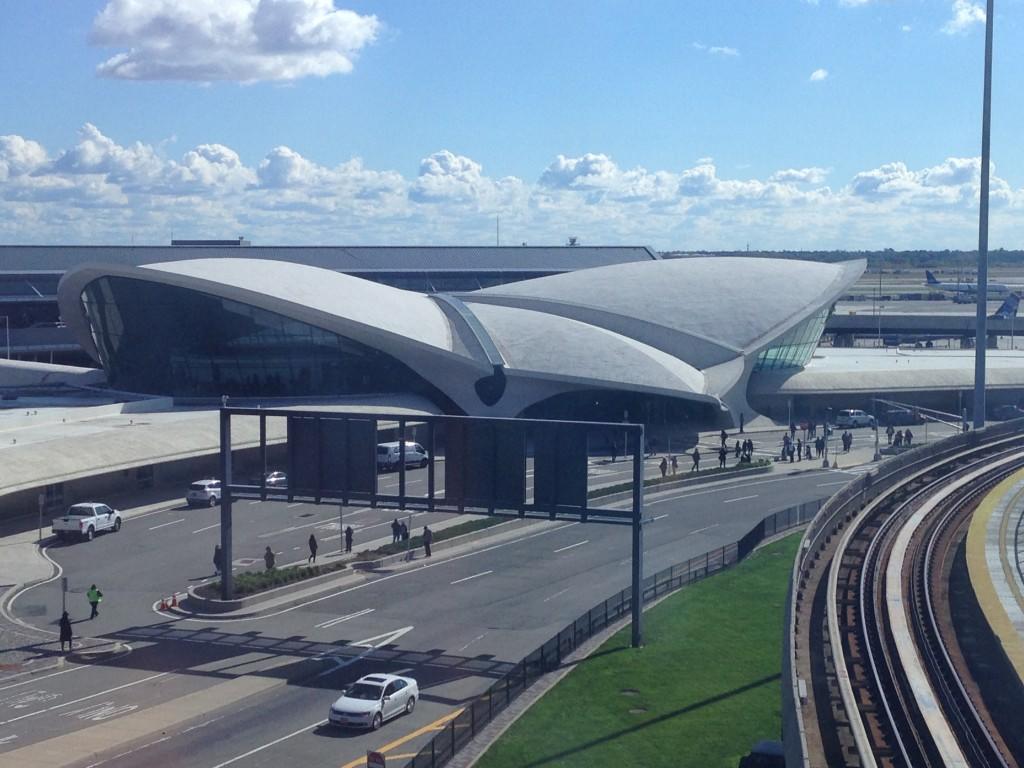
FlyerTalk gathered with TWA staff one last time to remember the joys and tragedies of working inside the famed Flight Center at JFK.
In 1976, Jamie Hogan and Anna Montella entered into Terminal Five of John F. Kennedy International Airport (JFK) as flight attendants of the airline Howard Hughes built — Trans World Airlines. At 19 years old, the two had no idea what they would see over the 20 years that followed.
“It was an amazing building to work in,” Montella said, standing in what remained of the TWA Ambassador Lounge. “Lots of films, lots of movie stars, lots of heads of state, traveled on [TWA] … it’s one of a kind – you’ll never see this again.”
“The most storied airline in aviation history,” Hogan added.
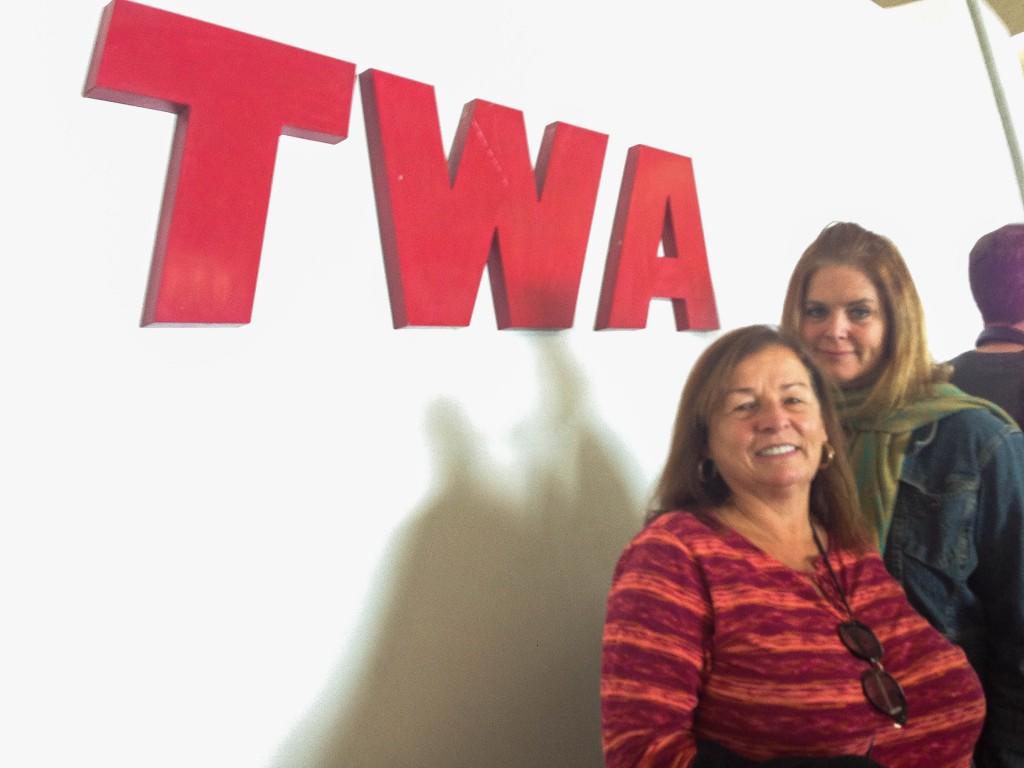
Former TWA flight attendants Jamie Hogan (right) and Anna Montella (left).
The two were among a crowd of thousands who came to visit the TWA Flight Center on Sunday, October 18, the final day the Jet Age icon would serve as a dedicated aviation building. The former terminal was opened to the public for one day only as part of the Open House New York weekend. Immediately after Sunday’s event, the terminal would close its doors for good and work would begin on converting the old structure into a $265 million hotel, a project announced in September by New York Gov. Andrew Cuomo.
For former flight attendants Montella and Hogan, the governor’s project didn’t necessarily matter right at that moment; they were too busy reliving the lives they’d lived in the famous building.
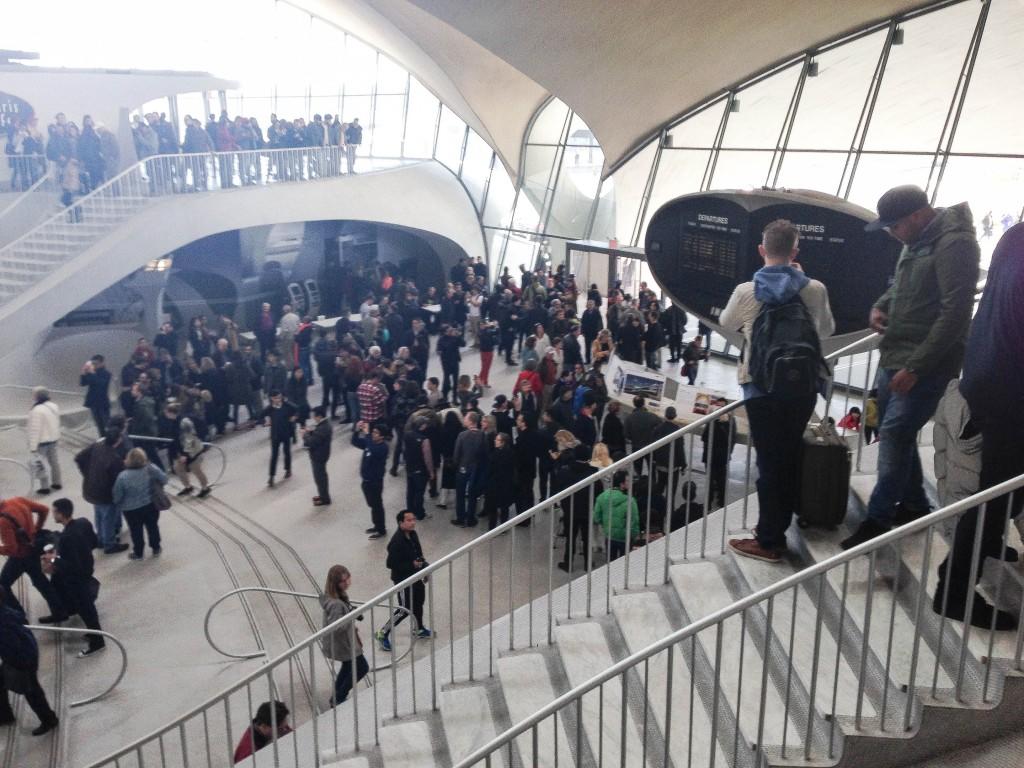
The view outside the Ambassador Club.
“We walked into the tunnel, and the tears and the chills that everyone got were overwhelming,” Montella said. “We all grew up in this terminal … we met so many wonderful people traveling through here.”
The building originally opened in 1962, one year after its renowned architect, Eero Saarinen, passed away. The gull-winged building quickly became an icon of aviation’s Golden Age, a neo-futuristic design that embraced the modern aircraft that would soon take passengers across the country and around the world. The building was so uniquely ahead of its time, that even TWA staff didn’t quite understand it at first.
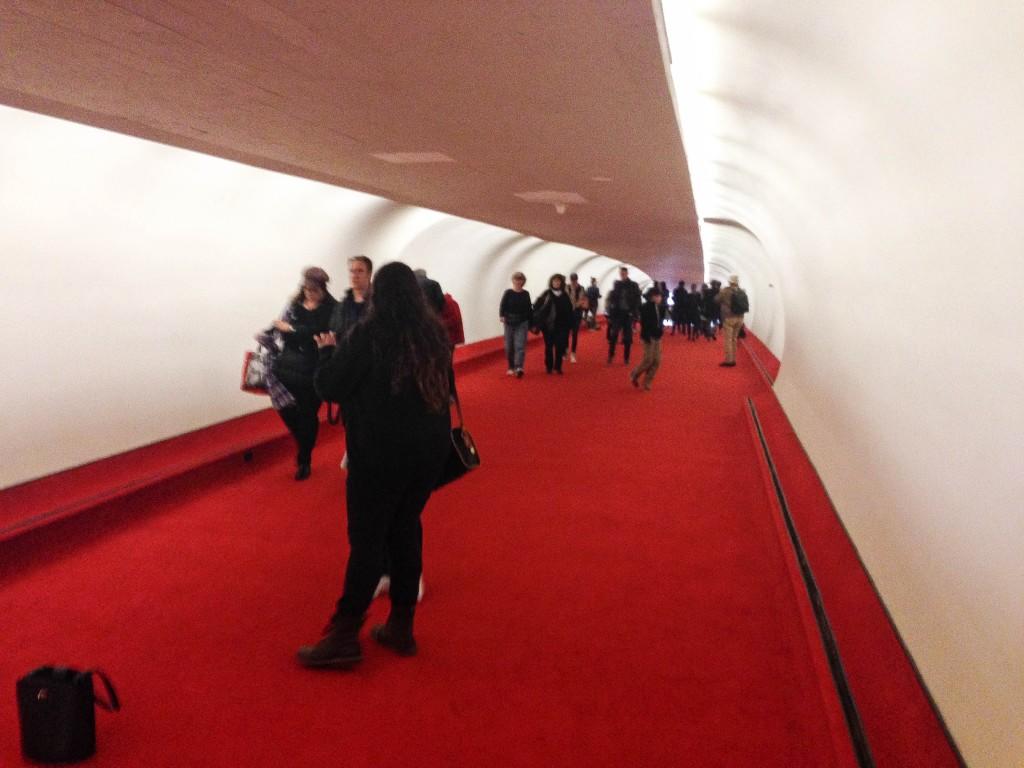
“Would the passengers crawl to the gate?”
“When they were building the tunnel, it was a cement tube. We asked ourselves ‘Would the passengers crawl to the gate?'” asked Tony Scimeca, an air mechanic and crew chief who began working for TWA six years before the Flight Center opened. “When they opened it, what a difference. With the red carpeting, it was pretty amazing to see.”
Despite its age, the building remained in much the same condition it was in when the terminal closed in October 2001. Two oval signs on either side of the building continued to display arriving and departing flights to JFK. Red carpeting still lined the tube entering the building, as well as the observation space now facing the new Terminal Five occupied by JetBlue.
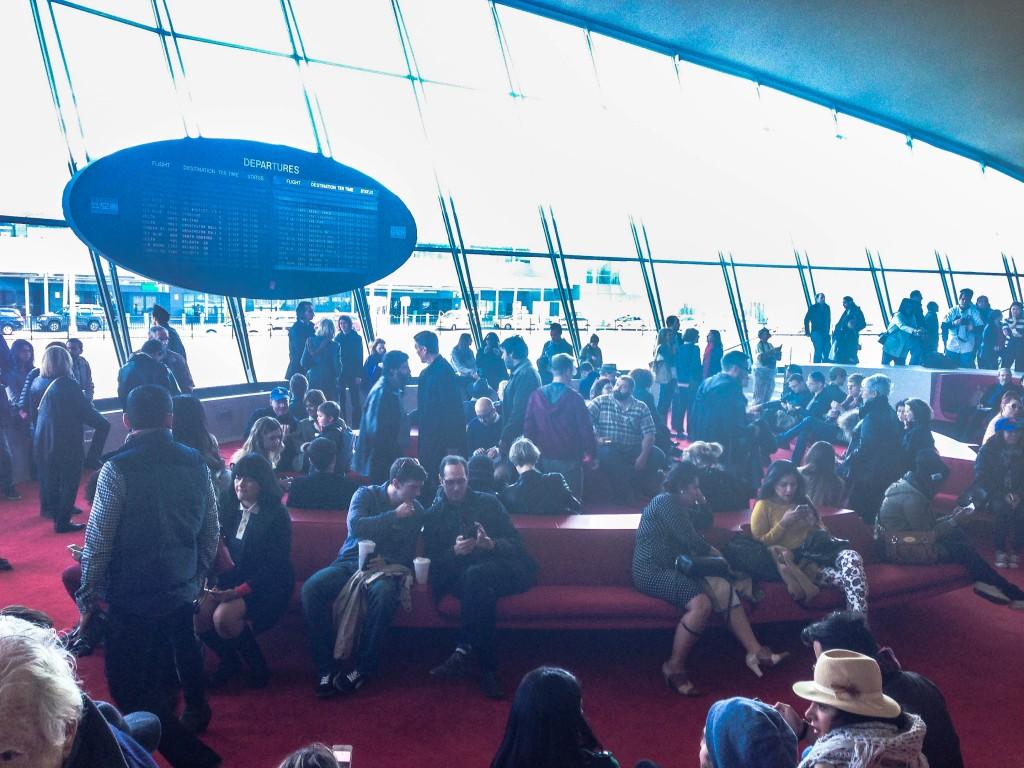
The departures board still hangs in an observation space overlooking the new Terminal 5.
For Hogan and Montella, the most important part for them remained the Ambassador Club. Walking out of the space, now in disrepair, the two recalled the numerous celebrities that passed through the exclusive club, from Elizabeth Taylor to Princess Grace – as well as their regular customers.
“They would come in all the time and they traveled a lot, so they needed certain things,” Hogan recalled about the customers who came through the Flight Center. “If someone’s child was in trouble, or they misconnected, or they had a special affair and they forgot their tuxedo, we were known for our premiere client services. So what happened is we established a great relationship with our customers.”
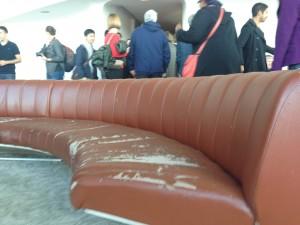
Original seating outside the Ambassador Club.
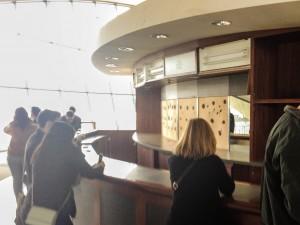
The bar outside the Ambassador Club.
For the joys held by the building, sad memories came rushing back as well. The Flight Center became the centerpiece of panic and sorrow after TWA Flight 800 exploded off the New York coast on July 17, 1996. For Hogan, it was a family affair – as both she and her cousin rushed over to JFK to help moments after the accident.
“I was home that night and I heard it on the news,” Hogan recalled. “Being that I was here for so many years, I came back here … [my cousin] and I were assigned to take care of the families that were just coming back, who just heard the news. So we had them here gathered in the Ambassador’s Club.”
Captain Jeffery Shrewsbury also visited the Flight Center with his family, shortly after visiting the TWA 800 International Memorial for the first time. As a pilot who had flown the Boeing 747 involved (TWA ship number 17119), returning to the building was an experience for him.
“It’s startling,” said Shrewsbury, dressed in his old TWA uniform. “There’s no other way to say other than that it’s emotional – [the Flight Center] … it’s a major part of my life.”
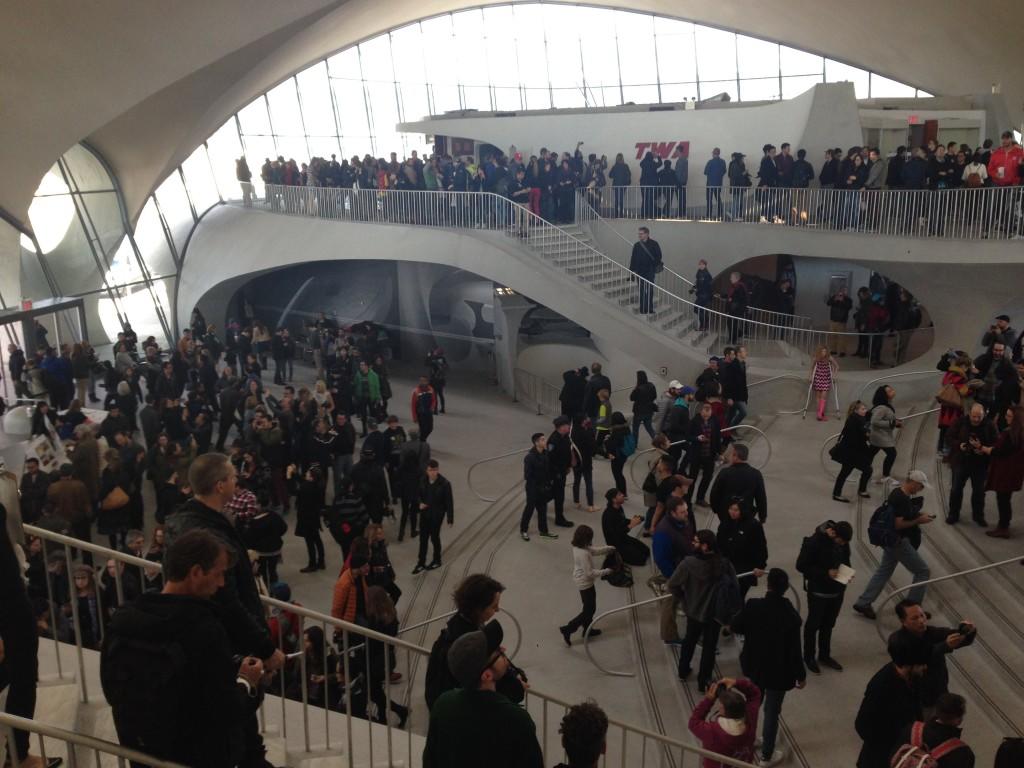
“We used to jokingly call it Trouble, Worry and Aggravation.”
For the gathered public, the building represented a bygone era of aviation and a key piece of New York history. For those who were employed by the airline, it represented more than a piece of American history or an airline that would ultimately be absorbed immediately after the September 11 attacks.
“It wasn’t only just the building, but working for the company — I enjoyed working for Trans World Airlines,” Scimeca recalled. “We used to jokingly call it Trouble, Worry and Aggravation — but it was Trans World Airlines, and it was a good airline.”
Even though the final TWA flight landed on December 1, 2001, one would never know it from talking to the former employees who gathered to pay homage to their terminal. The mechanics, pilots, ground crew and flight attendants bragged about how they came together on a regular basis over the years, bound by the joys and sorrow they saw while working in and around the Flight Center.
“I think anytime you work for a company for 45 years, emotionally that’s it,” said Scimeca. “You work for a company that long, you can’t help but feel good about it.”
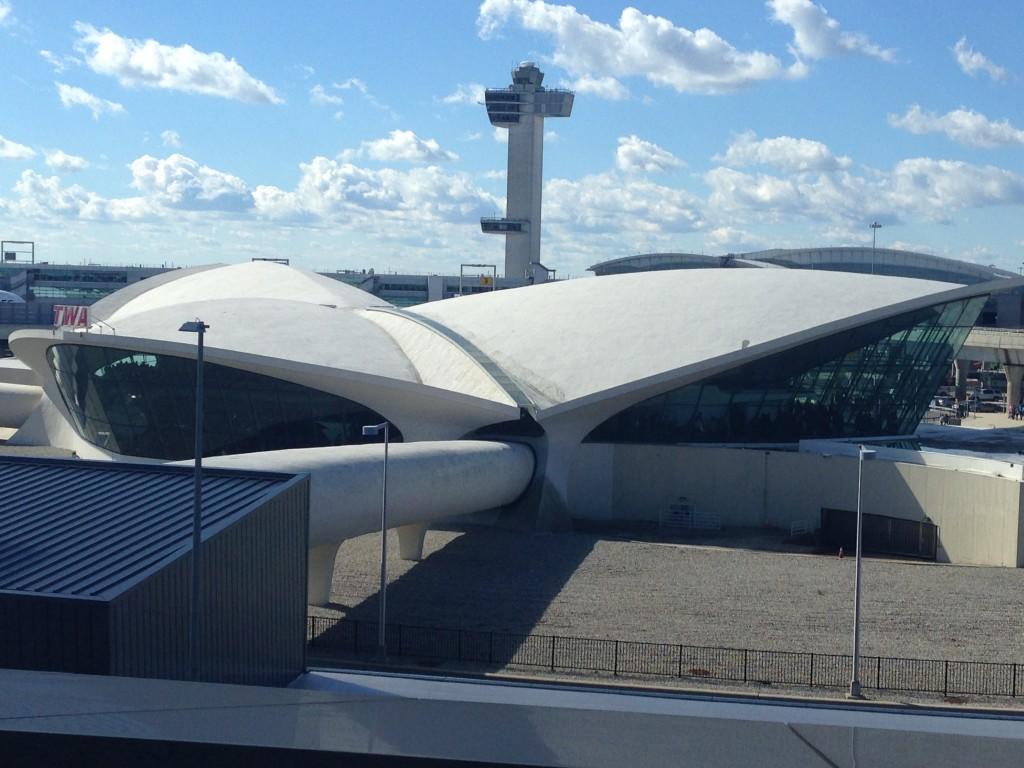
“I hope they preserve as much as they can.”
For Hogan and Montella, the rise of the hotel project also represents a new start for their TWA family. With plans calling for multiple public spaces and observation decks, the building could once again play a major part in their lives after completion, which is projected for 2018.
“We’re looking forward to [the re-opening],” Montella said. “We’re going to spend many a nights here.”
Above all, everyone FlyerTalk spoke to about the renovation project expressed hope that the building would maintain the charm and history of the airline that once called it home.
“I hope they preserve as much as they can,” said Shrewsbury.
[Photos: Joe Cortez]
























If you would like to see the original photos of the JFK TWA Terminal shot by Architectural Photographer Ezra Stoller, Google the following: ezra stoller twa terminal I had a college summer job with Mr. Stoller and assisted in taking the photographs you can see by clicking on "More images for ezra stoller twa terminal" after the above Google search. It was pure coincidence that years later I became a Captain for TWA and was based at JFK international, or was it just a coincidence! Capt. Phil Pirrotta (retired)